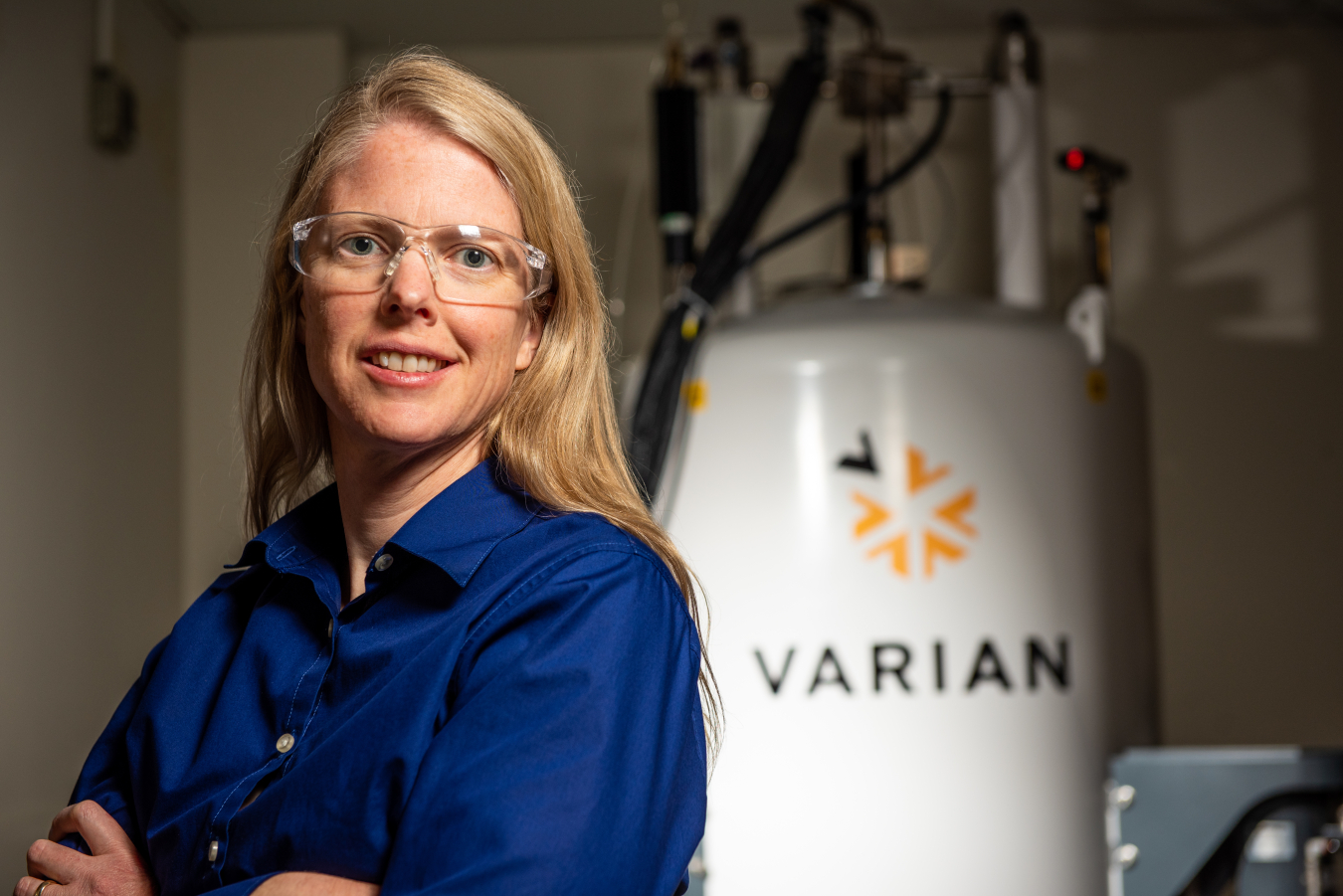Learn why Dr. Wendy Shaw loves her job as the Director of the Physical Sciences Division and scientist at the Pacific Northwest National Laboratory.
July 16, 2019
Wendy Shaw is the director of the Physical Sciences Division and a scientist at Pacific Northwest National Laboratory. Her Division Director role involves overseeing, fostering, and representing the activities and career development of ~200 people in areas ranging from Materials Science, Geochemistry, Separations, Chemical Physics, and Catalysis. Her personal research focus in two distinct areas, both of which are inspired by nature. The first is working to develop catalysts which enable renewable energies by seeking to understand and mimic the effects seen in enzymes. The second is studying hard tissues, such as bones and teeth, in an effort to understand the role of proteins in creating materials with such unique properties. She was the recipient of a DOE Early Career award in 2010, and has active programs funded by DOE-BES and NIH. She is an editorial board member for Biophysical Journal and is organizing the 2022 International Hydrogenase Conference. She received a bachelor’s degree in chemistry from Whitman College and a doctorate in physical and biophysical chemistry from the University of Washington.
What inspired you to work in STEM?
A combination of my family and several key teachers sparked and cultivated my interest in science. My dad loved technology—we always had the latest electronic gadgets before anyone else—and he was extremely knowledgeable, despite having little formal education. My mom loved nature and gave me a love of plants and spending time outdoors. From their examples, I grew up understanding the value of passionate interest. This turned into a strong love of biology and understanding the inter-related nature of living systems. My fifth grade teacher, Mr. Way, taught us how to approach problem solving “out-of the box.” In one particular instance, he wanted us to determine the distance around the outside of a can. None of us could figure out how to use a ruler to get an accurate number. Finally he said, “Maybe you could string something around it,” to get us to use a string to get the distance and then measure it with a ruler. This was a valuable lesson in considering other ways to solve problems. Later, my high school biology and chemistry teacher had a big impact when he sponsored me in an advanced chemistry special study I was interested in but that wasn’t available. He also allowed me to write grants for equipment and teach younger students. My passion for the environment and how chemistry could both destroy and help solve environmental problems led to my undergraduate major in chemistry and minor in environmental science.
What excites you about your work at the Energy Department?
Learning from nature to solve energy problems. My work involves mimicking enzymes, proteins that do catalytic reactions. Every day, I am more amazed and more humbled by the natural systems that have evolved and our limited understanding of them. Bit by bit, though, we are learning some of Mother Nature’s secrets. The fun and frustrating ones are the serendipitous discoveries—fun because they are so unexpected but frustrating because it isn’t always easy to come up with an explanation. However, those have often been the best advancements. As Isaac Asimov is famous for saying, “the most exciting phrase to hear in science, the one that heralds new discoveries, is not “Eureka! (I have found it),” but “that’s funny...”
How can our country engage more women, girls, and other underrepresented groups in STEM?
By making science fun. I was at a “science day” recently. There were many different activities. Some were interactive and some were just presentations. The kids LOVED the interactive activities, and practically fell asleep during the PowerPoint presentations. Look at the interest that shows like CSI and Breaking Bad have generated—forensic science programs have skyrocketed at universities around the country. Even though the TV shows over-simplify these fields, they bring it to a level that makes young people see how much could be done with it and how powerful and FUN it is.
Do you have tips you'd recommend for someone looking to enter your field of work?
Obviously, I recommend taking as much chemistry as possible, even courses outside your area of specialty. Often it has been my broad science interest that has given me a new idea or a new collaboration—not my key area. Take as much math as possible. And don’t downplay the need to take writing and speaking courses; these are critical to being a research scientist in allowing you to convey your ideas clearly.
When you have free time, what are your hobbies?
Backpacking, fly fishing, kayaking, traveling, making cheese (biology and chemistry!), construction projects, working with kids.

